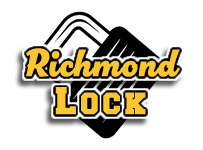Safes
Gun safes, fireproof safes, home safes & commercial safes - We have them all!
Things to consider before investing in a safe
More than 385,000 property owners lost their homes and valuable possessions to fires in the United States last year. On top of that, almost 1.6 million homes were burglarized during the same time frame. Considering all the turbulence and uncertainty these days, those numbers are sure to soar during the years to come. Based on some theories and reports, fires and burglaries may only be the least of our worries moving forward.
Though we’d all like to be able to constantly safeguard everyone and everything that’s important to us, we’re all painfully aware it’s just not possible. That being said, safes allow us to protect some of our most valuable possessions and essential documents from many of the potential threats. Of course, not all safes are adequate.
Quality and certain other factors make all the difference. Our certified safe technicians can help you find your ideal solution.

Different Types of Safes on the Market
Though dozens of varieties of safes are available, in-home models fall into three basic categories. They come in various sizes and shapes and have different outward appearances. While those aren’t necessarily the most important factors to consider, understanding the types available to you can help when choosing the best model for your needs.
- Stand-Alone Safes: As the name indicates, stand-alone safes are usually freestanding models. You can affix them to the floor, but that’s really not necessary because they’re often too heavy to easily move around. They’re extremely versatile and can hold virtually anything. Their flexible layout and variety of locking options allow you quite a bit of freedom of choice.
- Wall Safes: Wall safes are generally embedded in interior walls and hidden by paintings or other decorative elements. You can have them mounted in different ways, but they’re usually affixed to wall studs. These types of safes typically aren’t quite as heavy as their stand-alone counterparts mainly because they’d be more difficult to support if they were. Thieves have been known to simply cut these safes out of walls and steal them along with their contents.
- Floor Safes: Wall safes have become somewhat predictable over the years, but burglars often overlook in-floor models. They’re embedded in floors and tend to be heavier than wall-mounted varieties. They’re typically anchored to the floor and aren’t as easy to move as wall safes. In many cases, they’re much less convenient for homeowners as well, though.
Among these types of safes, you’ll also find several subsets. You may hear them called gun safes or jewelry safes to mention a few specific names. These titles refer more to the interior setup and overall purpose of the safe more so than anything else. In truth, you can store anything you like in them, but they’re often meant for safety or concealment rather than security.
Taking a Closer Look
Now that we’ve covered the main types of safes, it’s time to discuss some of the critical underlying details. No matter what you plan to store in your safe, it’s important to consider why you want to stow those items. If you simply want to hide your guns from the little ones or don’t feel comfortable leaving valuable jewelry lying on the dresser, those standard models may be adequate.
In the event you’re looking for more protection, you’ll need to dig a bit deeper. This is where fire and burglary safes come into play. They’re designed to fend off flames and heat or thwart attacks from conventional hand tools. Some offer defense against both dangers.
Fire Safe Basics
Fire safes offer varying levels of protection against heat and flames. Some of the most secure models on the market have a two-hour fire rating. This means they can withstand flames of up to 1,200 degrees for two hours. If you’re storing documents or digital media, consider choosing a safe that will keep the internal temperature below 125 degrees and humidity levels below 85 percent.
Burglary Safe Essentials
Burglary safes also provide different levels of protection depending on their ratings. B and C-class safes offer minimal security whereas UL RSC-rated models can withstand being attacked by crowbars, chisels, drills and other tools for five minutes. Those with a rating of UL TL-30 should be able to ward off attacks for 30 minutes.
Bottom Line
Safes come in numerous forms, and each one is said to be designed for a specific purpose. Still, cheap, standard models just don’t offer the levels of protection most people need for their valuables no matter what their names and descriptions suggest. Steel gauges, door thicknesses, and locking mechanisms are important factors to look for in a safe, and weight, ratings, and price range are good indications of quality.




Our Products & Services
Residential Services
- Residential Services
- Residential Hardware
- Safes
- Wall safes
- Floor Safes
- Gun Safes
- Fire rated
- Media Storage
- Safe Services
- Safes opened (cracked)
- Repairs
- Combination Changes
- Electronic Key Pad & Lock Body Conversions
- Antique Safe Restorations
Commercial Services
- Commercial Services
- Commercial Hardware
- Door Closers
- Door Buzzer Systems
- Keys for Schools
- Alarm Locks
- Panic Devices
- Master Key Systems
- Commercial Safes
- Wall safes
- Floor Safes
- Fire rated Safes
- Gun Safes
- Depository
- Safe Services
- Safes opened (cracked)
- Repairs
- Combination Changes
- Electronic Key Pad & Lock Body Conversions
- Antique Safe Restorations
Marine Services
- Boat & Marine Services
- Key Duplication
- Lock Repair
- Lock Replacement
- Motorcycle, ATV & RV Parts & more
- Keys Cut by Manufacturer Code
- Lock Repair
- Lock Out Services
